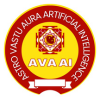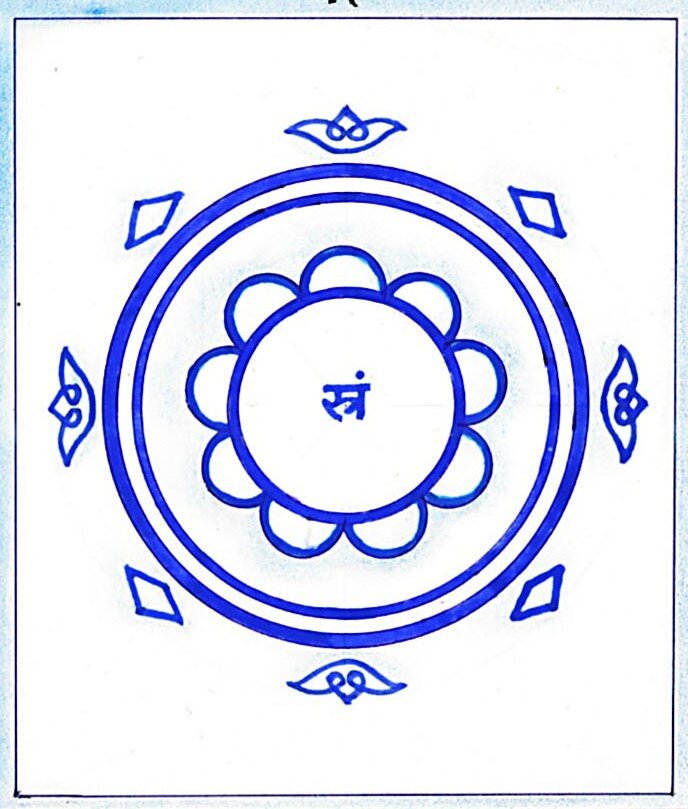INTERMEDIATE VAASTU COURSE
Training programmes on Vastu
- VASTU FOR BEGINNERS
Course Structure :
(15 Lectures, two hrs. each lec; During evening hours between 6 and 8 PM; Three weeks duration; Five days in a week; plus one Practical Class)
|
Lec.1. INTRODUCTION TO THE ART & SCIENCE OF VASTU SHASTRA |
|
A. Vastu history |
|
B. Vastu & Vaastu |
|
C. Vastu in relation with other Art & Objects |
|
D. What is Vastu Shastra |
|
Lec.2. Logic and Science of Vastu |
|
A. Logic of Vastu |
|
B. Vastu Vidya Vis a Vis Science |
|
Lec.3. PHILOSOPHY OF VASTU |
|
A. Orientation |
|
B. Direction & Zoning |
|
C. Vastu Purusha |
|
D. Vastu Mandala |
|
Lec.4. INTRODUCTION TO 5 ELEMENTS (Pancha Maha Bhootas) |
|
A. 5 Elements & Its relation to Men, Material & Nature |
|
B. Vastu of 5 elements & their relation to site |
|
Lec.5. HOW TO HANDLE MAGNETIC COMPASS & TAKE READINGS |
|
A. Marking & Study Plans |
|
Lec.6. SITE SELECTION |
|
A. Selection of site |
|
B. Site Topography & its Surroundings |
|
C. Vastu of soil & earth |
|
D. Selection of plot & its shape |
|
Lec.7. LOCATION OF ROAD |
|
A. Importance of Road in site selection |
|
B. Levels & Slope of Plot |
|
C. Location of Over bridge and Fly over |
|
Lec.8. VASTU OF BUILDINGS |
|
A. Boundary & Set Back (s) of Plot |
|
B. Gate & Main Doors |
|
C. Stair & Steps |
|
D. Lifts & Elevators |
|
Lec.9. PLACEMENT & DIRECTION OF ROOMS |
|
A. Puja & Study Room |
|
B. Kitchen & Pantry |
|
C. Dining room |
|
D. Living room |
|
E. Bath & Toilets |
|
F. Store & Box room |
|
G. Guest Bed room |
|
Lec.10. LOCATION OF MASTER BED ROOM |
|
A. Master Bed room |
|
B. Elder son’s Bed room |
|
C. Daughter’s Bed room |
|
D. Children’s Bed room |
|
E. Other Rooms |
|
F. Animals & place for keeping pets. |
|
Lec.11. INTERIOR |
|
A. Placement of Furniture and other objects |
|
Lec.12. EXTRIOR |
|
A. Porch & Verandah |
|
B. Drive Ways & Entry Gates |
|
C. Chajjas & Sun Shade |
|
D. Windows & Opening |
|
E. Centre Yard & Terrace |
|
Lec.13. RECOMMENDED HEIGHT, SLOPE & LOAD OF BUILDING DISTRIBUTION AS PER VASTU PRINCIPLE’S |
|
A. Interior |
|
B. Exterior |
|
Lec.14. INTRODUCTION TO : |
|
A. Underground water tanks, Tube-well |
|
B. Over head water tanks |
|
C. Culvetts |
|
D. Septic Tank |
|
E. Drainage system & plan |
|
Lec.15. STUDY OF PLANS |
|
A. Residentia |
|
B. Commercial |
|
C. Industrial |
PRACTICAL CLASSES & SITE VISITS
-
II. DIPLOMA IN VASTU
Course Structure :
(36 Lectures, 2hrs. each lec.; During evening hours between 6 and 8 PM; Duration Twelve weeks; Three days in a week; plus two Practical Classes)
ELIGIBILITY: Candidate must complete Level-I Course viz. VASTU FOR BEGINNERS
i. I.C.U.
ii. Nuclear Medicine
iii. Cat Scanning, X.Ray etc.
iv. Research & Lab.
v. Blood Bank
|
Lec.1. INTRODUCTION TO : |
|
A. Vastu Shastra the Science of Vedic Knowledge |
|
B. Foundation of Indian Civilization and Vedic Philosophy |
|
C. Vedic Architecture |
|
Lec.2. VASTU & ENGINEERING |
|
A. Vastu & Civil Engineering |
|
B. Vastu & Structural Engineering |
|
C. Vastu & Architecture |
|
Lec.3. CLIMATOLOGY INTRODUCTION |
|
A. Climate, Weather & Micro Weather |
|
B. Climatic Parameters |
|
C. Study of Climatology, National Level |
|
Lec.4. CLIMATOLOGY EFFECT ON VASTU |
|
A. Different Climatic Zone in India & to Discover comfort Zone |
|
B. Relation of Climatology, Vastu & 5 elements |
|
Lec.5. USE OF FIVE ELEMENTS IN VASTU SHASTRA |
|
A. Five elements & its relation with Human Mind, Body & Soul |
|
Lec.6. SUN & MAGNETIC FIELD |
|
A. Natural Forces & its relation with Vastu |
|
Lec.7. CREATIVE FORCES & ITS EFFECTS ON |
|
A. Positive Forces |
|
B. Negative Forces |
|
C. Positive & Negative energies |
|
Lec.8. LOGIC AND SCIENCE OF VASTU SHASTRA |
|
A. Logic of Vastu Vidya |
|
B. Scientific explanation of Principle Vastu Shastra |
|
Lec.9. ORIENTATION |
|
A. Direction & Zoning |
|
B. Vastu Purusha |
|
C. Vastu Mandala |
|
D. Vastu Deva |
|
E. Vastu Shilpa |
|
F. Vastu Kala |
|
G. Vastu Manav |
|
Lec.10. VASTU FOR URBAN & RURAL AREAS |
|
A. Villages |
|
B. Town |
|
C. City |
|
D. Modern Town ship |
|
Lec.11. VASTU FOR |
|
A. House |
|
B. Bungalow |
|
C. Shops & Establishment |
|
D. Commercial Complex |
|
Lec.12. VASTU FOR |
|
A. Apartments & Flats |
|
B. Condemenium |
|
C. Community Living |
|
Lec.13. VASTU FOR |
|
A. Workshop |
|
B. Factories |
|
Lec.14. DEFFECTS & RECTIFICATION ON |
|
A. Soil |
|
B. Site |
|
C. Plot |
|
D. Surroundings |
|
E. Neighbouring |
|
Lec.15. DEFECTS & RECTIFICATION ON |
|
A. Foundation |
|
B. Buildings |
|
C. Stair & Steps |
|
D. Walls & Roofs |
|
E. Terrace |
|
F. Garden |
|
Lec.16. PLACEMENTS AS PER VASTU |
|
A. Doors & Windows |
|
B. Opening & Ventilation |
|
C. Floor, Roof & Terrace |
|
D. Basement & Mazzanine |
|
Lec.17. VASTU OF INTERIOR & EXTERIOR |
|
Lec.18. VASTU OF COLOURS & LIGHT |
|
A. Effect of colour & light on human being |
|
B. Direction & Colour |
|
Lec.19. LANDSCAPING |
|
A. Water Bodies, Tube-Well, Pool |
|
B. Fountain & Water Falls |
|
C. Rock Gardends |
|
D. Culvetts |
|
E. Septic Tank & Soak pit |
|
Lec.20. LANDSCAPING & PLANTS (INSIDE & OUTSIDE) |
|
A. Recommended variety of plants seasonal/permanent & their effects on Vastu. |
|
B. Garden layout of different types Natural & Built Environment. |
|
Lec.21. BUILDING SERVICES |
|
A. Electrification |
|
B. Lift & elevator |
|
C. Sewerage & Sanitary system |
|
Lec.22. SURVEYING |
|
Principles and objectives of surveying, magnetic, compass surveying and plain table surveying. Use of levelling instruments, method of recording levels, contour maps reading, measurement and location of building and land demarcation, introduction to tools, instruments and techniques. |
|
Lec.23. ENVIRONMENTAL SCIENCE |
|
Introduction to climatology, atmosphere, environment. Classification of climate changes, movement of Sun, equinox, orientation, building form in climate zones, shading devices, air circulation comfort conditions, heat exchange process, thermal control techniques. |
|
Lec.24. CLIMATOLOGY ANALYSIS IN VASTU DESIGN |
|
A. Orientation of building with Vastu principle. |
|
B. Climatology v/s Men, Material & Nature. |
|
C. To study site conditions regard to Altitude, Longitude, Air Pressure, Wind, Speed, Solar Radiation. |
|
Lec.25. APPLIED CLIMATOLOGY ON VASTU PRINCIPLE |
|
A. Input data for Site Selection. |
|
B. Input data for Climatical important planning & Design. |
|
C. Climatology v/s Five Elements & its usefulness in Vastu. |
|
D. Building in different climatic zone of India. |
|
E. Climatology used in Interior & Architectural media. |
|
Lec.26. CELESTIAL BODIES |
|
Study of celestial bodies and its Cosmic Rays radiation that reaches the earth, it’s effect on Structure, Nature, Men & Material. |
|
Lec.27. VASTU FOR HOTELS & RESTAURANTS |
|
A. Restaurant |
|
B. Lodge |
|
C. Hotels |
|
Lec.28. VASTU FOR HOSPITALS |
|
A. Casuality |
|
B. OPD |
|
C. Ward/Rooms for different diseases/p> |
|
D. O.T. (Operation Theatre) |
|
E. Specialised Departments: |
|
i. I.C.U. |
|
ii. Nuclear Medicine |
|
iii. Cat Scanning, X.Ray etc. |
|
iv. Cat Scanning, Research & Lab. |
|
v. Blood Bank |
|
Lec.29. VASTU FOR TEMPLE |
|
A. Vastu Shilpa |
|
B. Vastu Deva Shilpa |
|
C. Manav Shilpa |
|
D. Vastu Mandal |
|
Lec.30. VASTU AND INTERIOR |
|
A. Type of furniture & its Raw Material. |
|
B. Shape, Size & Style of furniture & fittings. |
|
C. Layout of furniture & its position. |
|
D. Direction of sitting & sleeping. |
|
Lec.31. VASTU OF COLOURS & LIGHT |
|
A. Natural & chemical Colours |
|
B. Natural light & artificial light |
|
C. Effect on our living style |
|
D. Effect on our body, soul & mind |
|
E. Remedies |
|
Lec.32. VASTU ENVIRONMENTAL SCIENCE |
|
Building Services: A brief introduction to terminologies used in building |
|
A. Electrical |
|
i. Electrical installation interior & exterior |
|
ii. Natural lighting, artificial lighting & daylight factors |
|
iii. Distribution system H.T. & L.T. its effect on Vastu |
|
iv. Precautions & safety measurement as per Vastu principles |
|
v. Conductor & insulator |
|
B. Water Supply |
|
i. Storm water disposal |
|
ii. Drainage |
|
iii. Sewerage |
|
C. Sound |
|
i. Acoustice noise control, behaviour of sound, process of hearing, vibration, insulation |
|
ii. Air/Sound circulation & Air Conditioning principle |
|
D. Solar Efficient Building on Vastu principle |
|
i. Solar Gain |
|
ii. Solar & Wind Protection |
|
Lec.33. VASTU & SCIENTIFIC INSTRUMENTS |
|
The science of Vastu, Feng shui, Building Biology, Geomancy and related sciences deals with the byelaws of nature for creation of harmonious & ecologically balanced spaces. Objectively scientists have been working in this direction and have developed various instruments to study the invisible energy forces in the environment and its impact on human system. Some of the Instruments are:
|
|
Lec.34. PRACTICAL TRAINING ON COMPASS AND LECHER ANTENNA |
|
Lec.35. STUDY OF BUILDING PLANS & PRACTICALS CASE STUDY & PRACTICALS |
|
Lec.36. GROUP DISCUSSION & STUDIES |



